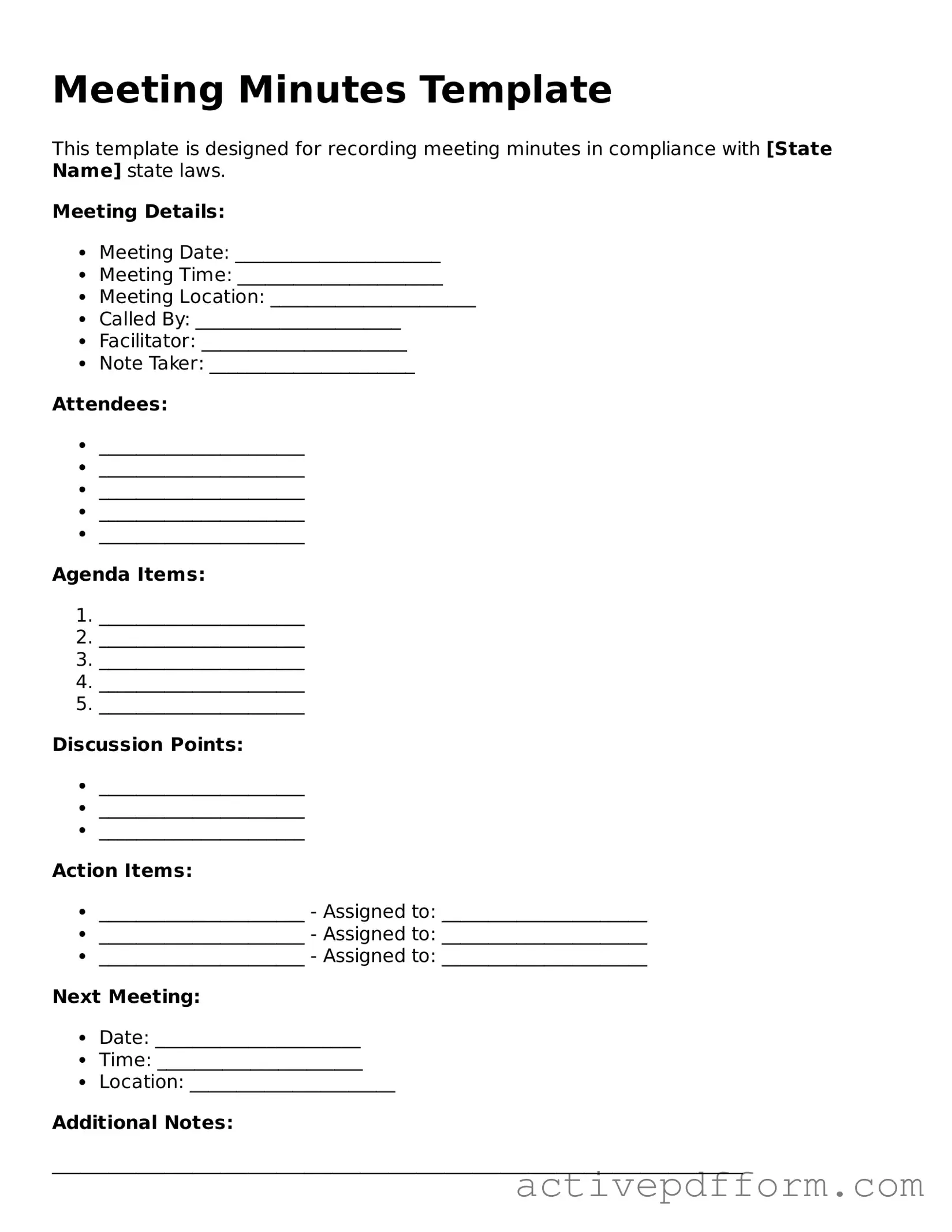What is the Meeting Minutes form?
The Meeting Minutes form is a document used to record the key points, decisions, and actions taken during a meeting. It serves as an official record of what transpired, ensuring that everyone is on the same page and can refer back to it later. This form is essential for maintaining transparency and accountability within an organization.
Who should complete the Meeting Minutes form?
Typically, the person designated as the secretary or note-taker for the meeting is responsible for completing the Meeting Minutes form. However, any attendee can take notes and contribute to the minutes, especially if they have specific insights or details to add.
What information should be included in the Meeting Minutes form?
The form should include the date and time of the meeting, the names of attendees, and the agenda items discussed. Additionally, it should capture key decisions made, action items assigned, and any important discussions or comments. Including the next meeting date, if applicable, is also helpful.
How should the Meeting Minutes be distributed?
After the minutes are completed, they should be shared with all meeting attendees and any relevant stakeholders who were not present. This can be done via email or through a shared document platform. Timely distribution is important to ensure everyone has the information they need to follow up on action items.
How long should the Meeting Minutes be?
Meeting minutes should be concise yet comprehensive. They don’t need to be a verbatim account of the discussion. A summary of key points and decisions is usually sufficient. Aim for clarity and brevity, typically one to two pages, depending on the meeting's complexity.
Are there any legal requirements for keeping Meeting Minutes?
While there may not be specific legal requirements for all organizations, keeping accurate meeting minutes is a best practice for many businesses, especially corporations. It helps protect the organization by providing a record of decisions and discussions that can be referenced in the future if needed.
Can Meeting Minutes be amended after they are distributed?
Yes, if errors or omissions are identified after distribution, the Meeting Minutes can be amended. It’s important to note the changes and communicate them to all relevant parties. Transparency in this process helps maintain trust and accuracy in record-keeping.
How long should Meeting Minutes be kept on file?
Meeting Minutes should be retained for a reasonable period, typically between three to seven years, depending on the organization’s policies and any applicable laws. Keeping them on file ensures that there is a historical record of decisions and discussions that can be referenced in the future.
